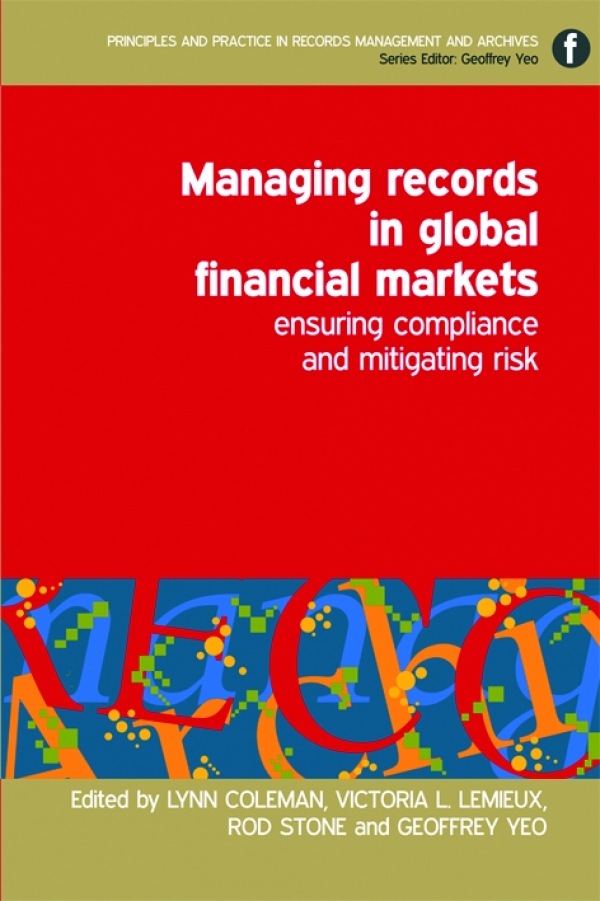Book contents
- Frontmatter
- Contents
- Introduction to the series
- Contributors
- Introduction
- List of abbreviations
- 1 Global financial markets
- Part 1 Regulatory and legal compliance
- Part 2 Balancing risk and return
- Part 3 Litigation-related issues
- 11 Authenticity and evidential weight of digital evidence in legal proceedings
- 12 Discovery and records management
- Part 4 Record-keeping approaches
- Index
12 - Discovery and records management
from Part 3 - Litigation-related issues
Published online by Cambridge University Press: 08 June 2018
- Frontmatter
- Contents
- Introduction to the series
- Contributors
- Introduction
- List of abbreviations
- 1 Global financial markets
- Part 1 Regulatory and legal compliance
- Part 2 Balancing risk and return
- Part 3 Litigation-related issues
- 11 Authenticity and evidential weight of digital evidence in legal proceedings
- 12 Discovery and records management
- Part 4 Record-keeping approaches
- Index
Summary
Introduction
Business disputes in the form of litigation can be small or large, from individual client challenges to major class action suits about particular business activities. Litigation is not new to the financial sector. Commercial litigation, intellectual property disputes, class action suits and wrongful dismissal claims are all forms of civil litigation to which financial institutions may be subject.
Financial institutions are faced with a number of challenges in preparing for litigation. One of the biggest is, where is the evidence and information that will support the case and provide a defence? Institutions may be subject to discovery requests (known as disclosure requests in some countries); these are legally binding requests for the retrieval and production of records deemed relevant to a lawsuit. In such cases, a ‘legal hold’ may be applied to the institution's records; ‘legal hold’ indicates that potentially relevant records must not be destroyed when litigation is pending or in progress. In litigation, legal holds, records management and discovery come together. This chapter examines several aspects of the relationship between discovery in civil lawsuits and records management in a North American context.
Electronically stored information, records and litigation
Much of a financial institution's information is to be found in its records and record-keeping systems. Over the past 15 years, organizations have moved from paper-based to electronic record creation and keeping, and the majority of business is now carried out electronically. Electronic records are sometimes referred to as ‘electronically stored information’ or ESI. In today's workplace we talk about records, documents, data, content and information; depending on the audience and the area of practice, each term can be interpreted to mean something different.
The volume of information created by financial institutions is increasing, as are the complexities of managing it. How and why is the information created? Where is it stored? Is it within the company, outsourced to a third-party contractor or out there in the ‘cloud’? These questions arise because ESI can be:
• easy to copy and distribute
• hard to dispose of (you may think it has gone, but a computer forensic specialist may be able to retrieve it even if it has been deleted)
• changed automatically (e.g. when systems are migrated, dates may be changed on all documents, resulting in ‘creation’ dates being captured as the date of the migration rather than the actual date on which the document was created)
- Type
- Chapter
- Information
- Managing Records in Global Financial MarketsEnsuring Compliance and Mitigating Risk, pp. 165 - 178Publisher: FacetPrint publication year: 2011

